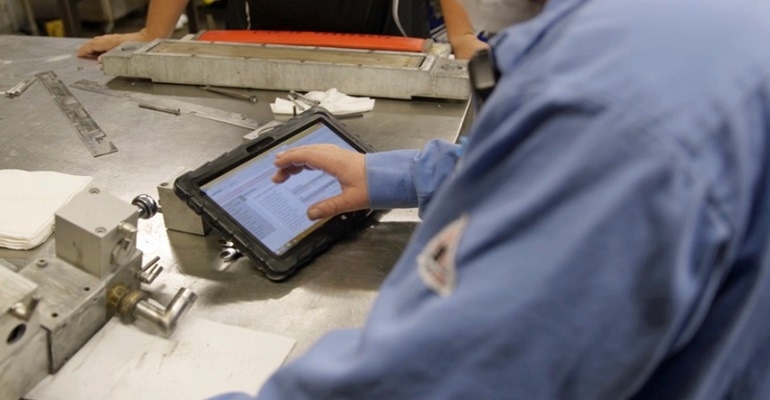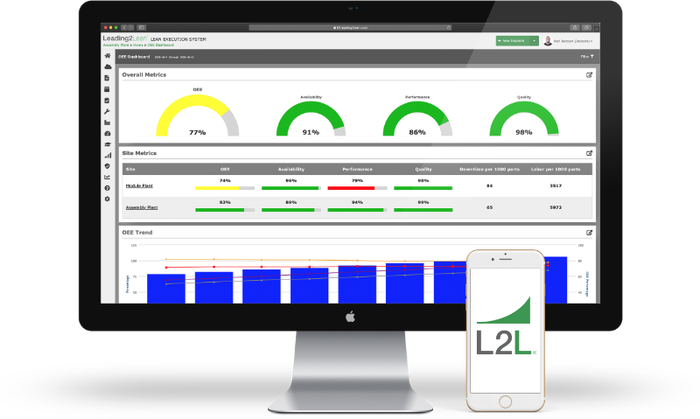Even Manufacturing Is Using Remote Workers
While it may sound peculiar, there is a growing population of remote workers in manufacturing.
October 21, 2020

On the face of it, it sounds ludicrous: manufacturing employees working from home. In recent years, many companies have shifted to some remote working. That exploded last March . . . but manufacturing? Doesn’t seem possible.
Odd as it sounds, that has changed during COVID-19.
The British-based Leesman firm recently conducted research on the state of at-home work. They quizzed the manufacturing and industrial engineering sectors and found that 53% of manufacturing employees had no remote-working experience. What’s surprising is that apparently, 47% did.
We perused employment sites such as Indeed, FlexJobs, and RemoteDesk, and all of them are currently running want ads for remote manufacturing employees.
To learn more about manufacturing work from home, we spoke with Bob Argyle, CCO of L2L, a company that offers digital management tools that provide access to plant data and tools remotely. Argyle noted that many plant workers are doing a hybrid combination of some days at the plant and some days remote. “A lot of our customers have engineers who are working from home. Many are doing the hybrid of two or three days at home, then at the plant,” said Argyle. “They can see everything in the plant. They can see the operations, and they get notices if anything is going on. They can talk with maintenance over the platform or call on the phone.”
With more and more plant data digitized, the idea of remote management isn’t that far-fetched. “The application is in the cloud, so they can see everything on the floor. They already had that before COVID,” said Argyle. “I called after COVID hit and everyone was in lockdown. They mentioned they hadn’t missed a beat. They can see from home what they could see from work.”

Before the pandemic, manufacturing employees were absolutely not working remotely. “Nobody was working from home before COVID. Yet a lot of them were traveling, and they could still be efficient even if they were not at the plant,” said Argyle. “Manufacturing hadn't adopted working from home, but now they’re seeing a lot of benefits. I see this hybrid version going on, where managers and engineers work part from home and part from the office. With this model, you don’t need as much office space.”
What Type of Plant Workers are Remote?
As for who’s working remotely on the manufacturing line, it tends to be the workers who are not actually putting nuts on bolts. “Process engineers, control engineers, and manufacturing engineers – they’re at their desks at home doing PLC work,” said Argyle. “They say they’re much more productive. They have their heads down doing design and not getting interrupted. They go to the plant to test things and get the tooling.”
While automation has helped plants to increase production with fewer workers, plants are not currently rushing to buy automation equipment. The economy isn’t strong enough to give them the confidence to spend. “Before COVID, automation was a big thing. They were putting robots out. That’s been going on for a long time, but I haven’t seen an increase in that,” said Argyle. “Yet on the shop floor workers are doing all of the communication through the app, same with the maintenance guy.”
Automation has made manufacturers more efficient, but it hasn’t delivered major staff reductions. “The headcount in manufacturing has gone up and down, but as we brought in more automation, the headcount remained about the same,” said Argyle. “But they’re producing ten times as much product with the same resources. Especially here in the US. Everyone is trying to build more with less.”
Collaborating from a Distance
Even at a distance, plant employees need to work together. They’ve been turning to digital tools for communication. “While they have visibility on the shop floor, but they still need to collaborate,” said Argyle. “Some of that is done through messaging. They’re collaborating and they’re using tools like Zoom and Teams. They’re finding ways to make collaboration effective while they’re remote.”
Collaborating was not necessarily easier when everyone walks into the plant each morning. It may be easier now that everyone is easier to reach. “Even when they were in the plant, they would have to find everyone and get everyone together. They would have to schedule a room,” said Argyle. “Now they just set the time. Some people will be at their kids' ballgame and they hop on the conference.”
Using the Remote Tools to Fight COVID-19
The tools that enable remote work are also coming in handy when it’s time to ensure social distancing and to track workers. “They’re using our tool for contract tracing. If one of their operators gets tested positive, they can go back and see everyone who was near the worker,” said Argyle. “They’re able to see that in a few minutes.”
The tools that support distant work also help manufacturers keep the plant clean. “They’re using the tool for making sure the plant is COVID clean. Everyone has to clean a certain area every few hours,” said Argyle. “We have COVID-clean schedules on our app, and managers are doing the scheduling from home. They get the feedback that the cleaning is happening, and if it isn’t happening, they can make sure it happens.”
Rob Spiegel has covered automation and control for 19 years, 17 of them for Design News. Other topics he has covered include supply chain technology, alternative energy, and cybersecurity. For 10 years, he was the owner and publisher of the food magazine Chile Pepper.
About the Author(s)
You May Also Like


.jpg?width=300&auto=webp&quality=80&disable=upscale)


